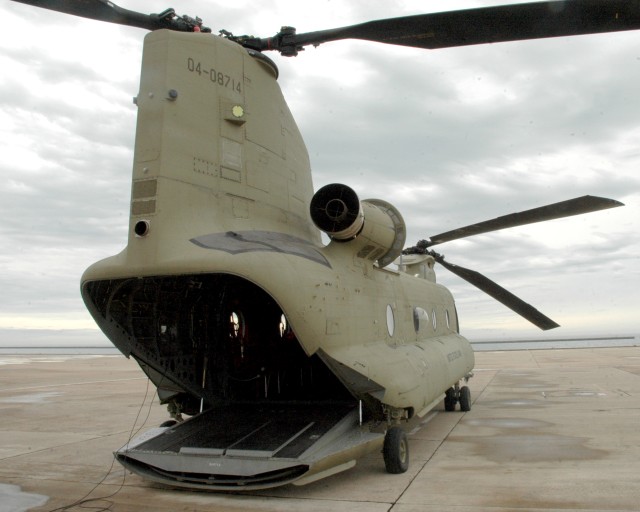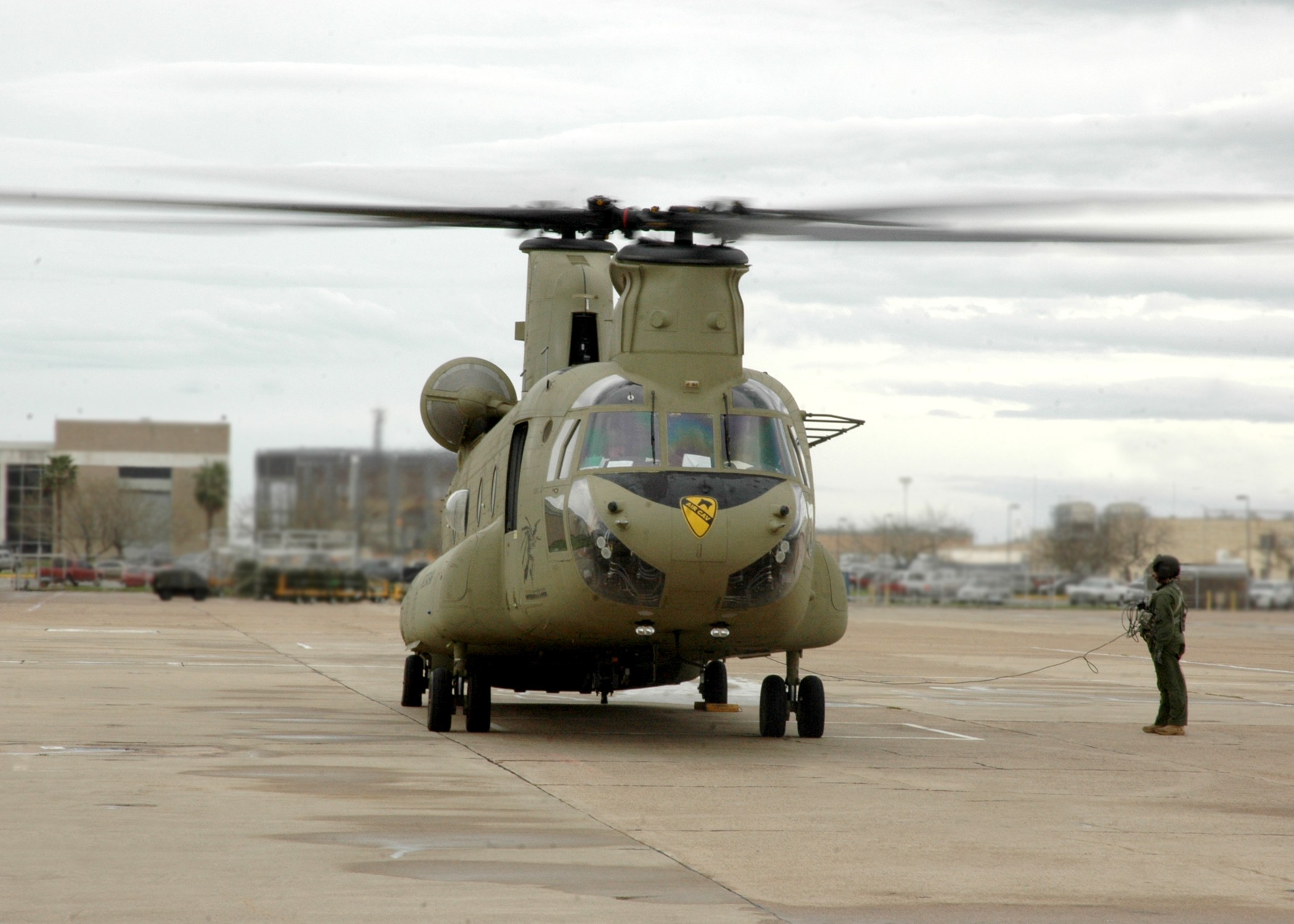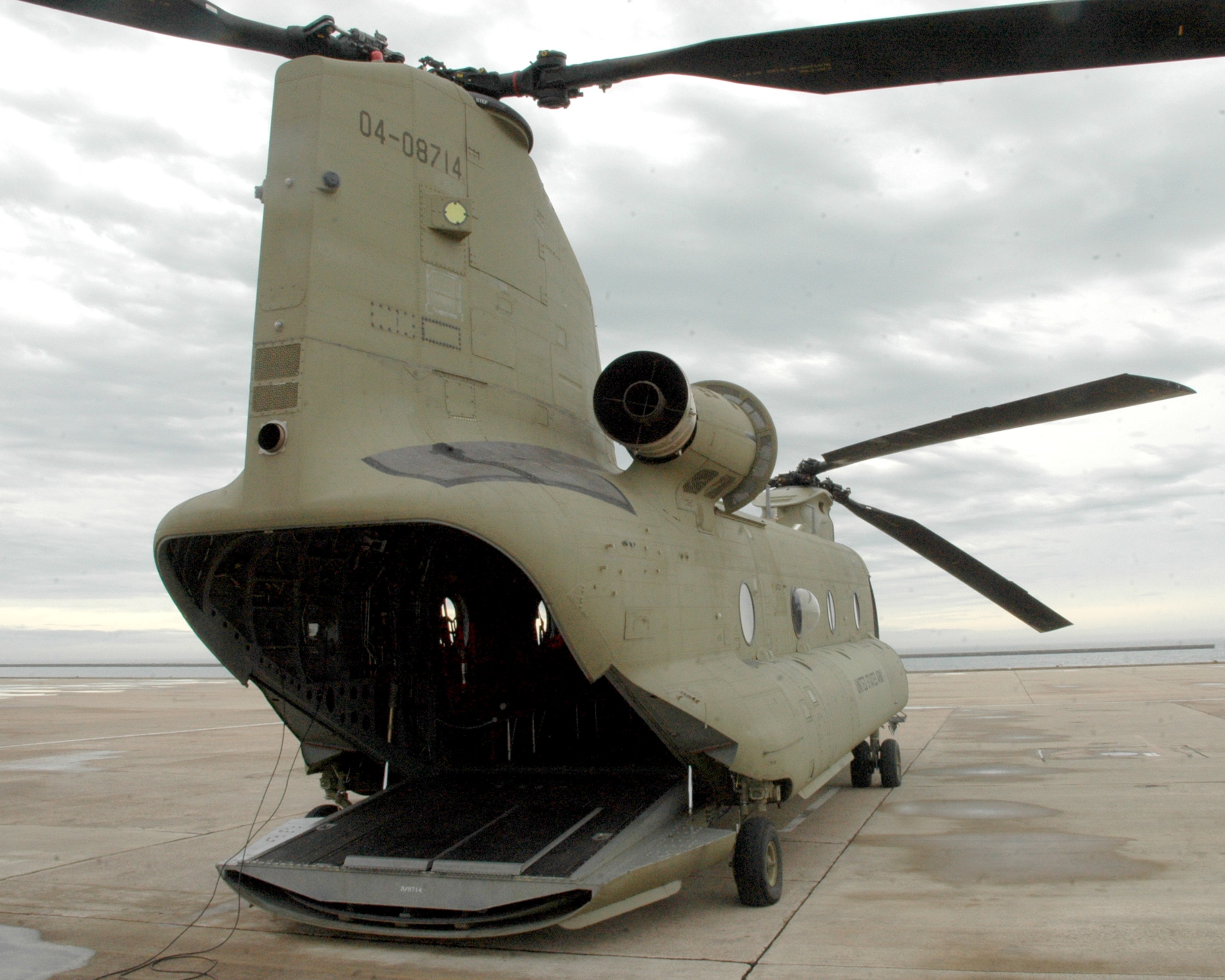Corpus Christi, TX -- Corpus Christi Army Depot delivered its first CH-47F Chinook helicopter to Redstone Arsenal in Huntsville, Alabama, Feb. 6, marking a turning point in the service history of the helicopter at the depot.
The F-Model, Boeing's latest update to the Chinook, is designed to extend the life of the fleet to 2030. It has numerous upgrades, including stronger engines, advanced avionics and reduced vibrations improving performance while decreasing operation and maintenance costs.
An Air Force C-17 Transport delivered the Chinook to CCAD in early September 2009 after it was damaged during a hard landing in Iraq. Severe structural damage to the undercarriage required repair that was beyond the scope of maintenance available at the unit level.
The F-Model inducted "was brand new," said Timothy Corwin, one of several Chinook Flight Test pilots at CCAD. "It only had 346 hours on it. Everything was new."
With its recent introduction to operational status--certified combat-ready in July 2007--this model hasn't had time to acquire normal wear and tear that would require a trip to CCAD, like D-Model Chinooks that boast thousands of flight hours.
"A lot of things like the D-Model Chinook that we get have a fair amount of wear and tear," he said. "They've been out there for a long time. Unless they're banging them off something we're not going to see them for years."
As the Army's Center for Industrial Technical Excellence (CITE) in aircraft structural repair, CCAD was the primary choice. It challenged depot artisans to devise a repair plan to return the CH-47F to service, a plan that could apply to future inductees. Insertion into the repair process was immediate after arrival.
A joint effort with the CCAD - Boeing team identified structural and component repair requirements to meet F-model criteria. The effort included Boeing's Philadelphia engineering team and Aviation and Missile Command's program management team who planned the maintenance challenge that loomed ahead.
"The effort included an evaluation to determine what the Army wants to have on hand for replacement structural parts," said Casimir Vital, Boeing's on-site Airframes Logistics Manager for CCAD. "From the perspective of what was needed to get the job done, the knowledge and efforts of floor mechanics, leads, branch, and division chiefs as well as program representatives from AMCOM were essential."
"Without the cooperative effort the process would have taken much longer," Vital added.
Another part of the plan required CCAD Chinook Flight Test pilots train to fly this particular model. CCAD has over a dozen Flight Test Pilots but few qualified to fly the F-Model.
"If you're not trained in the F-Model, you can't go in and fly," said Corwin. "You have to get certification from an approved school. They're very serious about the training and sustainment."
"We have two more [pilots] we're trying to get in the fall," Corwin said. "Their academics will probably be in Huntsville, Alabama, along with their simulator [training] but they'll go to New Jersey to fly the aircraft."
The new pilots will spend several weeks adjusting to the differences between the D-Model and the F-Model. The bulk of learning is with the new avionics system, the Common Avionics Architecture System or CAAS--it's vastly improved from the one in place since 1962.
The helicopter boasts a fully integrated, digital cockpit management system, "basically a digital glass cockpit," said Corwin. The entire interface is menu driven. Simple devices such as the radio are now digitized.
In the past, if you wanted to turn the radio on, you would just turn the dial.
"You're not turning a knob anymore," Corwin said. "You have to go through the software in the different menus to find what you want to turn on and off. You have to go into the software, get on the right page, select the right frequency, and then punch in all of the numbers."
Fortunately for sage CH-47 pilots, the new CAAS can be customized to look like the older cockpit they're familiar with.
"It looks a like a Chinook and flies like a Chinook," added Corwin.
The F-Model's airframe is stiffer than its predecessor using a composite skin and a monolithic frame structure to reduce vibrations. Boeing also made improvements to the air transportability-the ability to disassemble, transport it in a C-5 and reassemble on location. F-Model Chinooks also bear a beige color that is distinct against the D-Model's Olive Drab Green.




Social Sharing